Pantry Pro
Mobile App
2024
Improving inventory and invoice management for restaurant owners and operators.
Two challenges in the realm of restaurant inventory management — the slow process of entering new invoice data, and the tedious job of counting goods. This app is conceptualized to give the user power to upload invoices using AI technology, and a design to prevent task fatigue while counting items. In addition to being a streamlined application for managing and categorizing inventory.
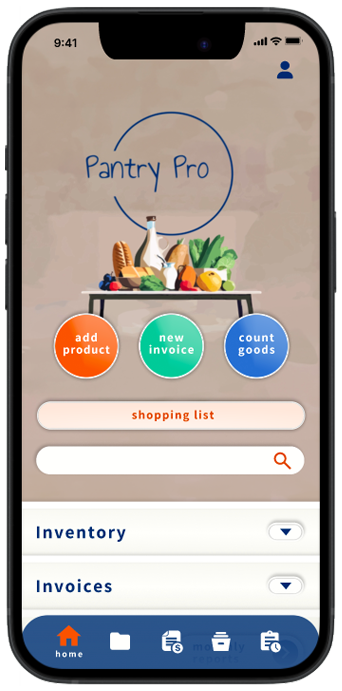

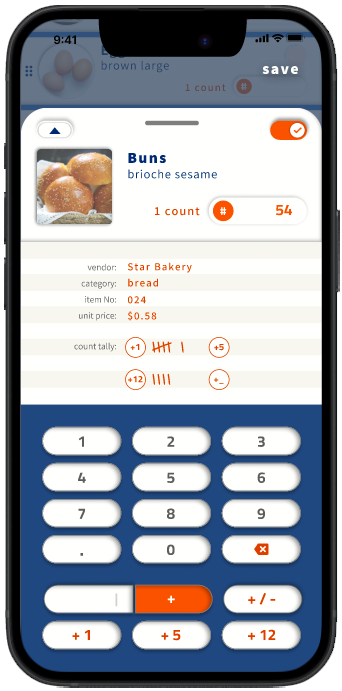
How to improve the experience of managing inventory for restaurants and food carts? After research and interviews, I was able to outline a few inconveniences of overseeing the ebb and flow of inventory, and pain points of other inventory management apps. Overwhelmingly, updating logs of current inventory was voiced by managers as a monotonous and dreaded responsibility.
Overwhelmingly, updating logs of current inventory was voiced by managers as a monotonous and dreaded responsibility. Small restaurant owners cited the chore as not being a priority, with time better spent on other business dealings.
Small restaurant owners cited the chore as not being a priority, with time better spent on other business dealings.Though, a common grievance among business owners is rising cost of goods and labor, both contributing to higher daily operational expenses. All recognize a necessity for keeping accurate books, and desire for an improved system to manage inventory.
User Research
pain points
human error
Two areas subject to human error; inventory miscounts and invoice data entry.
A counting system with visual cues or prompts, synchronized with counted goods, could eliminate incorrect counts. Or, for invoice uploads, a setup that completely eliminates human line entry.
time consuming
Both tasks, invoice entry and inventory counts, are time consuming responsibilities for business owners.
All application design decisions should focus on ways to expedite these processes; through user flows, goods organization, or using advantageous modern technologies to complete tasks.
task fatigue
Invoice data entry and inventory counting is monotonous, can cause fatigue.
Finding methods to keep the user focused on the task is essential for a successful application. Asset design could cater to multiple senses, or break a task into smaller segments, or simply eliminate the task all together.
cluttered interface
Overwhelmingly, an application redesign of a traditional inventory management system was requested through user research.
An interface that prioritizes essential information, and makes secondary information easily accessible, but out of view, not overly crowding the screen.
User Research
The user for this project consists of restaurant, and food truck, owners and operators. They require an app that simplifies how data updates are made when receiving inventory, as well as managing accurate counts of inventory on hand. Additionally, desire for an interface that is easy to navigate, and streamlines product information.
A monthly inventory count helper, ability to upload invoices from photo or pdf, easy access to past reports, auto updates to product quantities, and auto reminders for products needing to be replenished — all features recommended for this app to be successful.
Solution
How to address the challenges of task fatigue when entering invoice data or counting inventory?
1. With modern technology, manual data entry can be eliminated. AI can facilitate managers with scanning invoices and categorizing data into fields that can be edited and cataloged. This removes chance for human error, and frees up valuable time. An app invoice reader is necessary for establishing trusted inventory data.
2. Who likes counting, over and over again? Keeping accurate counts of inventory on hand is a requirement of weekly costing. For small restaurants, and food carts, profits can drastically change week to week. A system designed to aid managers in quick counting of goods, and reports itemizing what needs a restock, are both tools that could ease the daily rigor of owning or operating a small restaurant.
2. Who likes counting, over and over again? Keeping accurate counts of inventory on hand is a requirement of weekly costing. For small restaurants, and food carts, profits can drastically change week to week. A system designed to aid managers in quick counting of goods, and reports itemizing what needs a restock, are both tools that could ease the daily rigor of owning or operating a small restaurant.
Usability Study
Original ideation focused on a broader set of users; including employees in addition to managers. With a restaurant–wide user base, a message board containing shop to–do's and reminders was designed into the landing page. It was also conceived a POS system would be incorporated into the interface — a feature necessary for auto–updating product quantities. As these both would be beneficial, it was decided collectively these features are beyond the current scope of this project. Therefore, the user was reevaluated and focused solely on individuals who manage inventory, the owners and operators.
Therefore, the user was reevaluated and focused solely on individuals who manage inventory, the owners and operators.
Conducting new research with a singular user, interface flow took precedence. Landing page would now prioritize color coded call-to-action buttons, in addition to drop down menus for quick access to all inventory and recent invoice uploads. A shopping list feature was also added to help with product ordering.
Flow - Inventory count

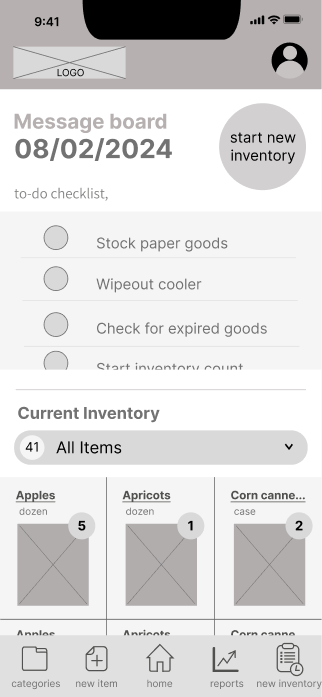
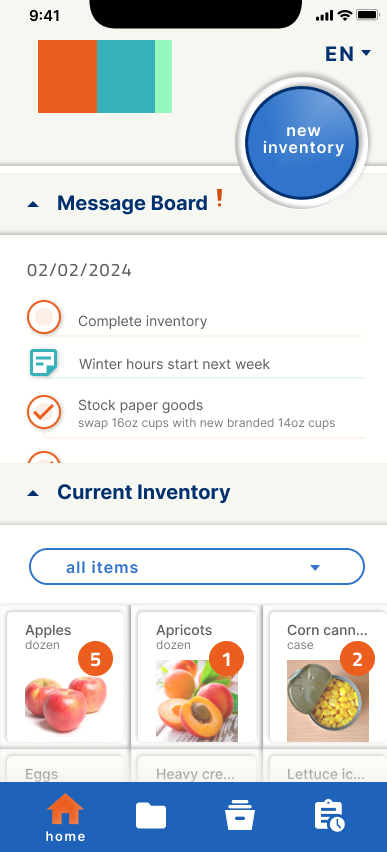
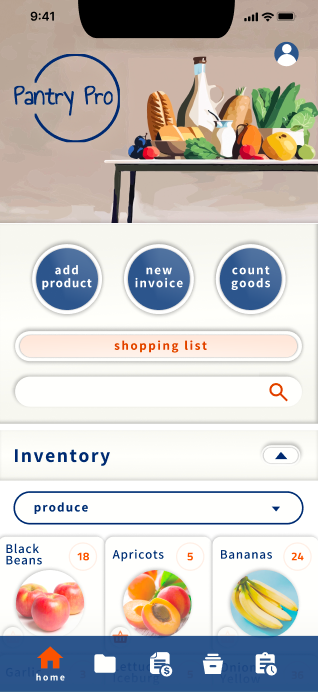

Design Iterations - Landing page
AI Invoice Reader Details
UI Kit
Flow - AI Invoice Reader
Competitive analysis for this project concluded that the ability to scan or upload invoices was not a standard feature amongst competitors. Though, other types of apps utilize the technology. I studied recipe box interfaces that allow users to upload printed copies, or photos, of personal recipes, that are then converted into a digital recipe. In addition, I probed how ChapGPT would analyze an invoice. The process to translate an invoice from paper to digital seems simple enough; ask AI to analyze document, detail how you would like information in return, then fill data into editable text fields for user to scan for errors.
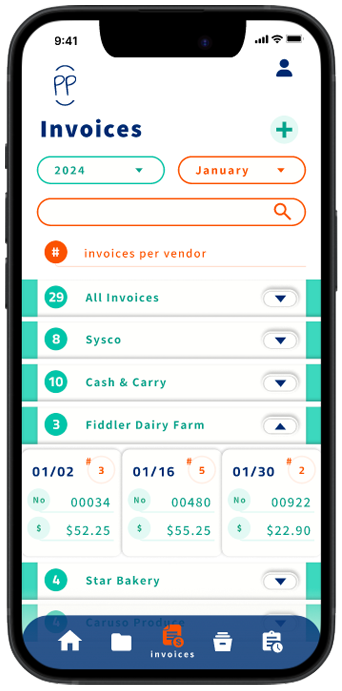
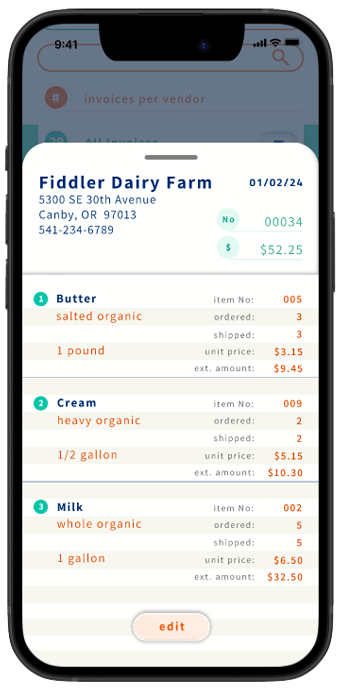
UI Kit
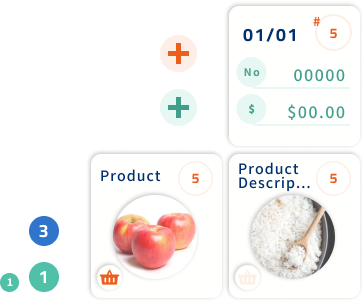
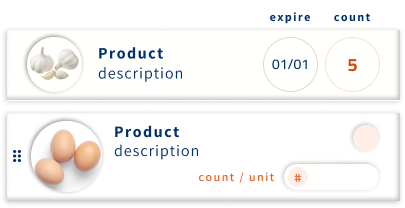
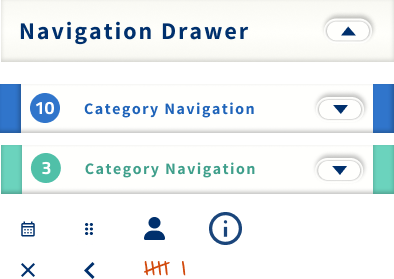
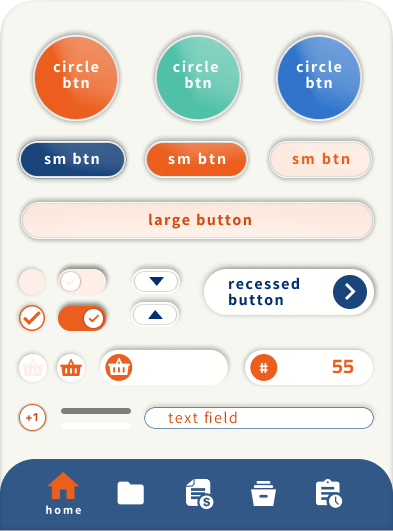
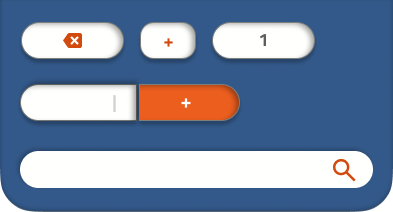
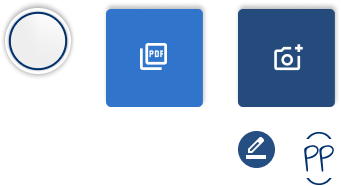
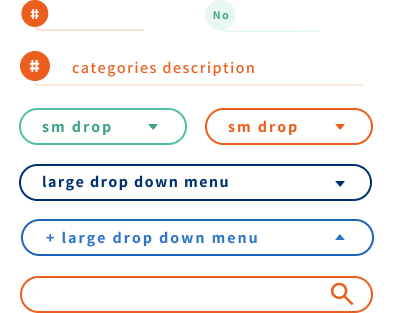

Conclusion
What has so far been ideated for this project is just a shell of what an inventory management application could encompass.
Further exploration might include developing a POS system that automates inventory quantity counts based on items sold, or including menu prep lists that predict what goods need to be ordered. Highlighting products that have increased in price, while simultaneously recommending menu items to push that cost less to make.
A fully automated inventory management system that would benefit restaurant and food cart owners, saving them both time and money.
Designing for the user, researching what tools can enhance their day to day, features they want or ones they don't yet realize, is my constant source for inspiring new ideas.
Additional Projects

